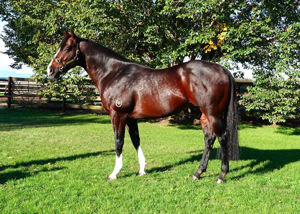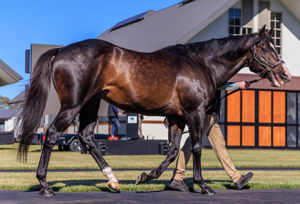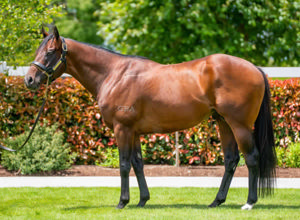When our office takes over new breeding industry clients one of the biggest problems, we find, is how poorly the special mare and stallion "write-off" rules have been applied.
Amongst the most common problems we find is the wrong application of these rules to horses bred by the breeder, i.e. "home-breds". I'm especially focusing on this problem due to the sheer volume of issues we've had with the wrong application of these rules to "home-breds" in the past 12 months.
Clarifying this aspect of these rules is well worth it as they are of enormous benefit to the tax position of breeders as they allow the accelerated write-off of eligible mare and stallion breeding stock and it is important to understand what eligible breeding stock they can be applied to.
What breeding stock do the "write-off" rules apply to?
The trading stock provisions of the Tax Act provide a different method for calculating the closing stock value of male and female horse breeding stock. Commonly referred to as the "write-off" provisions, broadly speaking under this method:
•A male horse breeding stock can be written down at a maximum rate of 25% on a prime cost basis to a minimum value of $1; and
•A female horse breeding stock can be written down at a maximum rate of 33 1/3 % on a prime cost basis so that the value is not less than $1 by the end of the year in which the horse is age 12. It follows that a mare acquired at age 12 or more can be written-off to $1 at the end of that tax year.
Although the closing value options for horse breeding stock is generally its cost, market selling value or replacement value, an additional special closing value option (i.e. the "write-off" rules) are available for a horse that is held for breeding , at least 3 years old and that was acquired by the taxpayer under a contract . It is this latter criterion that is so frequently misunderstood and applied, thus I expand on this criterion below.
A horse acquired "under a contract" does not include natural increase
For the purposes of the "write-off" rules a horse is "acquired under a contract" when it is acquired either by sale from an auction house or privately (say via an agent, "on-line" or directly with the seller). Note this does not mean a horse acquired by "gift" or from another party for no consideration. Remember, under contract law you cannot have a "contract" unless one of the parties gives "consideration".
By definition, the above excludes the acquiring of a horse by natural increase. This view is further supported by taxation ruling TR 2008/2, the current breeding and racing industry ruling.
Now…I've heard arguments that because you must enter into a "contract" with a stud farm or stallion owner to acquire a foal that such foals do meet the "contract" criteria. This is not accepted by the ATO, as noted in TR 2008/2 above. It appears a horse has to be "born" to be acquired under a contact. It's contentious, I agree, but that's the current ATO position, supported by many other leading tax authorities.
Let me provide an example below to clarify the points I have made above.
Example 1 – Horse acquired a contract
Carmela Pty Ltd is an existing breeding business and during the 2020 tax year introduced three broodmares to its breeding herd, being:
1. Tessa Bear – acquired for $55,000 (inc. GST) at a leading broodmare auction;
2. Samantha I Am – this mare was given to the company for NIL via a dear friend of the company owner who is quitting the commercial breeding game; and
3. Patricia – this mare was bred by the company and was first raced successfully by the company before being retired for breeding. The service fee incurred to acquire this mare was $27,500 (inc. GST)
Can Carmela Pty Ltd use the "write-off" rules in relation to these new mares?
· Tessa Bear – acquired via auction, she can be written-off under the write-off rules;
· Samantha I Am – acquired via a "gift" for no consideration, thus cannot be written-down under the "write-off" rules. Note – under special trading stock rules for disposals "outside the ordinary course of business", this mare would be acquired by the company for its market value, notwithstanding no monies changed hands; and
· Patricia – bred by the company, thus acquired via natural increase. This mare cannot be written-off under the "write-off" rules.
Is there a legitimate way you can use the "write-off" rules for your foals?
If your breeding business restructures its affairs, yes there is.
Either at commencement or during the life of a breeding business, you may decide, for perfectly legitimate commercial reasons and within the realms of Tax Law, to create a different entity to run the activities of your business.
When the horses are transferred to the new tax entity, say a trust or company, this constitutes the new entity acquiring the stock "under a contract". Thus, any horses transferred across that were originally bred by the owner can now utilise the "write-off" rules in the new entity. Refer example below.
Example 2 – A "home-bred" foal acquired by a new trading entity via a "contract"
Referring to example 1 above, Patricia and all of the mares and breeding stock of Carmela Pty Ltd are transferred to a newly set-up trust, the "Carmela Horse Trust", on 1 July 2020 to run the breeding business.
Patricia is now acquired via a "contract" by the new trust, thus she can be written down under the "write-off" rules within the new trust.
Please contact me if you wish for me to clarify or expand on any of the matters raised in this article.
Paul Carrazzo CA
Carrazzo Consulting Pty Ltd
801 Glenferrie Road, Hawthorn, VIC, 3122
TEL: (03) 9982 1000
FAX: (03) 9329 8355
MOB: 0417 549 347
E-mail: paul.carrazzo@carrazzo.com.au
Web Site: www.carrazzo.com.au










